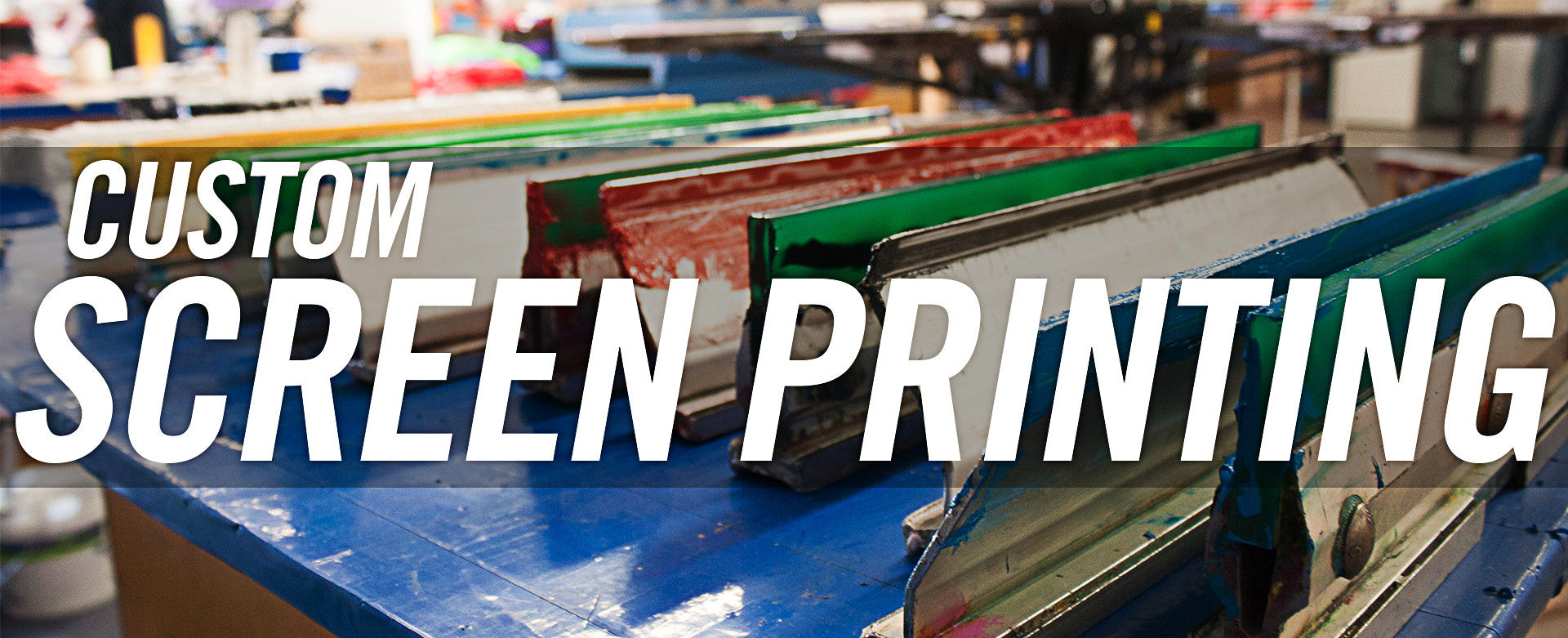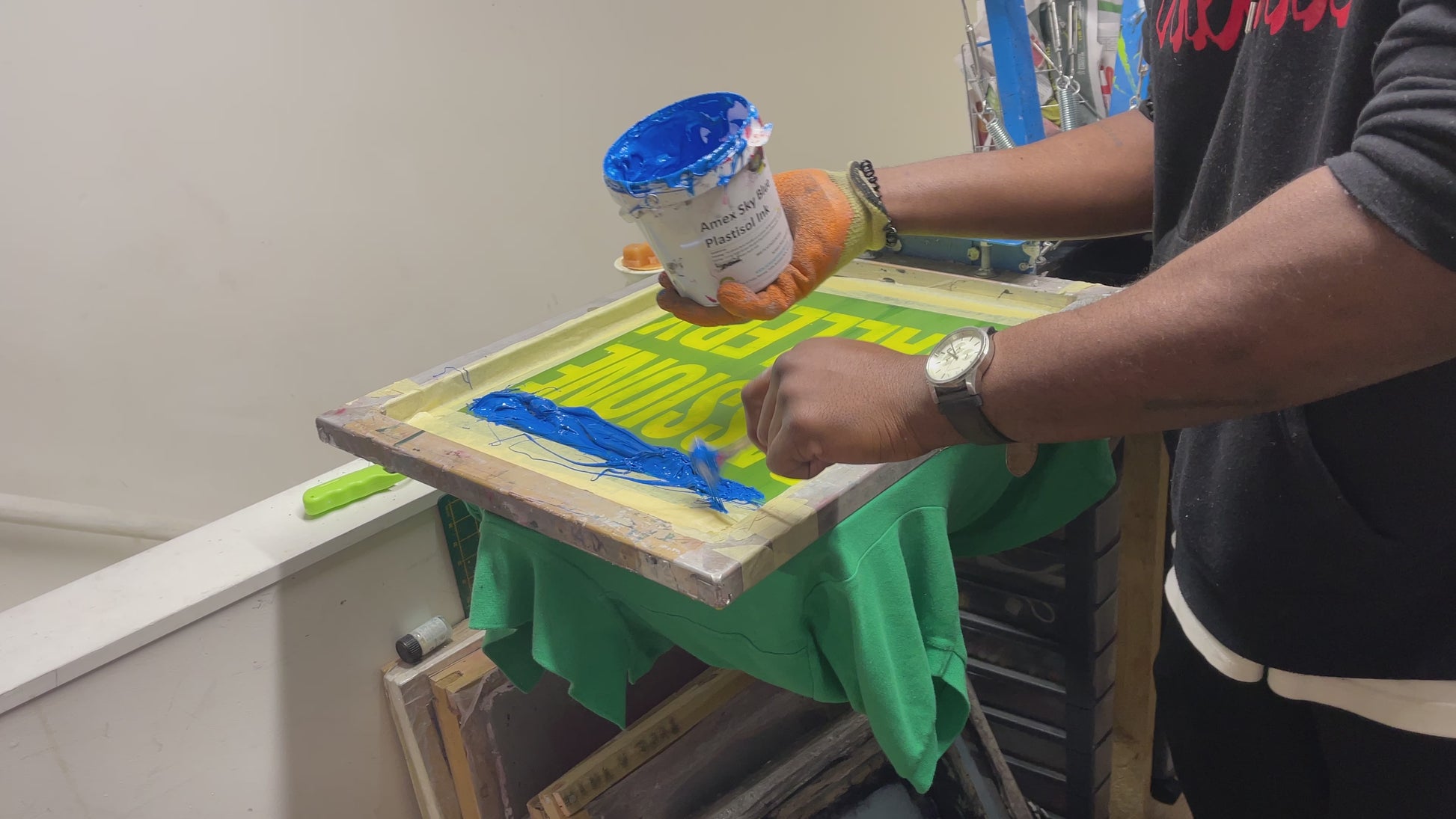High-End Silk Screen Printing for Premium Garments
High-End Silk Screen Printing for Premium Garments
Blog Article
Display Printing Uncovered: Whatever You Required to Find Out About T-Shirt and Garment Printing Techniques
If you have actually ever before wondered just how those vibrant designs wind up on your favorite tees, you remain in the appropriate location. Display printing is an interesting method that combines art with strategy, supplying countless possibilities for imagination. Comprehending the basics, from equipment to ink options, can substantially affect your outcomes. Ready to check out the necessary elements that make display printing an art kind? Allow's discover the details that can elevate your projects.
The Essentials of Screen Printing: Just How It Works
When you plunge right into screen printing, you'll discover it's both a science and an art. At its core, screen printing involves creating a stencil, or display, that enables ink to pass via just in particular locations.
Setting the display over the material, then utilize a squeegee to press ink with the display onto the garment. Each step is necessary, and understanding them will boost your screen printing abilities, changing easy garments into special, expressive items.
Sorts Of Display Printing Methods
Once you realize the basics of screen printing, it's time to check out the various strategies that can boost your designs. One preferred approach is standard display printing, where ink is pushed with a stenciled screen. This technique is wonderful for vibrant, vivid shades. There's water-based ink printing, which supplies a softer feel and is environmentally friendly, yet it calls for a different method to treating.
One more choice is plastisol printing, understood for its sturdiness and dazzling shades, making it a preferred for many brands. Experiment with halftone printing to create gradient results and elaborate layouts.
Important Tools for Screen Printing
To achieve spectacular outcomes in display printing, having the appropriate tools is fundamental. You'll require a strong screen printing framework, which holds the mesh that moves your style onto the garment. Next, spend in top quality squeegees; these are crucial for applying ink equally throughout the display.
Picking the Right Inks and Materials
When choosing inks and materials for display printing, you require to take into consideration the kind of ink that works finest for your task. Consider textile compatibility to guarantee your designs look last and terrific long. Explore green ink options to make your printing procedure extra sustainable.
Kinds Of Display Inks
Picking the ideal display ink is necessary for attaining vibrant, resilient prints that satisfy your project's requirements. There are a number of types of screen inks to take a look at. Specialty inks, such as glow-in-the-dark or metal, can add one-of-a-kind impacts to your styles.

Fabric Compatibility Factors To Consider
Comprehending fabric compatibility is essential for accomplishing high-grade display prints, particularly because various products respond uniquely to numerous inks. Always examine your inks on sample fabric to assure they adhere properly and preserve shade stability. In addition, keep in mind that textile weight and structure can impact the last end result, so selecting the right ink and material combination is important for your project's success.
Eco-Friendly Ink Options
Environmentally friendly inks are ending up being a popular option for display printers that wish to decrease their environmental effect while maintaining quality. When choosing inks, take into consideration water-based inks, which are less unsafe and less complicated to clean up contrasted to standard solvents. These inks bond well with fabrics, providing vibrant outcomes without toxic chemicals. You may additionally check out eco-solvent inks that use fewer unstable natural substances (VOCs), making them a much safer alternative for both your health and the world.
Furthermore, try to find inks made from renewable energies, such as soy or vegetable-based choices. By choosing the right inks and materials, you'll not just produce sensational layouts but also contribute to an extra lasting printing procedure. Make the switch, and your prints will certainly show your dedication to the environment!
Preparing Your Layout for Display Printing

Submit Layout Demands
To ensure your design looks sharp and vibrant on material, you'll require to pay attention to file format requirements for display printing. Start with vector data like AI or EPS, as they can be scaled without shedding quality. If you use raster photos, opt for high-resolution files, such as TIFF or PNG, preferably at 300 DPI. Avoid using JPEGs, as they can lose quality when resized. Make sure your design has a transparent background to protect against unwanted white edges on your prints. Ultimately, keep color modes in mind; CMYK is typical for display printing, so transform your RGB creates accordingly. By complying with these standards, you'll establish your art work up for a successful print.
Shade Splitting Up Strategies
Color separation is a necessary action in preparing your style for display printing, and mastering it can substantially improve your print quality. You'll require to damage your design into specific shades, as each color needs a separate display during printing. This precision not just assures precise color representation but additionally improves the printing procedure.
Resolution and Size
Attaining the very best lead to screen printing starts with ensuring your style has the best resolution and size. Ideally, your artwork must go to the very least 300 DPI (dots per inch) for sharp, clear prints. Your last product might look amateur and pixelated. if you utilize lower resolution.
When it involves dimension, think about the dimensions of your print area. Design your art work to match the final print dimension, preferably developing it in the real dimensions you'll be publishing. In this manner, you'll stay clear of any unforeseen scaling concerns.
Always inspect your layout in both vector and raster styles. Vector graphics can be scaled without losing high quality, making them ideal for screen printing. Preparing correctly will ensure your layout looks remarkable on every garment!
Step-by-Step Display Printing Process
Screen printing is a dynamic procedure that allows you to produce lively designs on numerous surfaces. To begin, you'll need a screen, emulsion, and your chosen ink. First, prepare your screen by cleansing it thoroughly. Next off, apply the emulsion uniformly and allow it completely dry in a dark area. Once completely dry, reveal your screen to light with your style positioned on it, which will harden the solution where the light hits, producing a pattern - screen printing kit.
After washing out the unexposed solution, your screen is ready. go to these guys Establish it up on your printing surface and straighten your garment below it. Put ink onto the screen and make use of a squeegee to press the ink via the pattern onto the fabric. Lift the screen thoroughly and allow the print dry. Ultimately, cure the ink using warmth to ensure resilience. That's it! You have actually efficiently screen published your layout.
Tips for Effective Screen Printing Projects
While you're diving right into your display printing jobs, bear in mind that prep work is crucial to success. Start by gathering all your materials-- inks, garments, screens, and mops. A tidy workspace aids protect against unwanted mistakes, so clean before you begin.
Next, verify your artwork is high-resolution and properly sized for your garment. Evaluate your display for proper direct exposure and clean it extensively to avoid smudges. When blending your inks, adhere to the producer's guidelines to accomplish the appropriate uniformity.
Throughout printing, he said use even stress with your squeegee for regular outcomes. Don't rush; take your time to confirm each print meets your standards. After printing, let your garments dry entirely prior to managing or packaging them.
Lastly, always maintain a sample of your benefit future recommendation. By doing this, you can assess your development and improve your strategies over time. Satisfied printing!

Regularly Asked Questions
How much time Does It Take to Establish a Display Printing Task?
Establishing a display printing task usually takes around 30 mins to an hour. You'll prepare the displays, mix inks, and change the press. The time differs based upon complexity and experience, so stay arranged!
Can I Publish on Different Textile Types Utilizing the Same Strategy?
Yes, you can publish on different material kinds using the very same method, but you'll require to change your setups and inks. Some fabrics absorb ink in different ways, so exploring assurances the most effective outcomes for every material.
What Are Common Errors to Prevent in Screen Printing?
When screen printing, stay clear of typical mistakes like making use of the wrong ink, neglecting appropriate exposure times, or avoiding pre-press checks. Constantly examine your setup and preserve tidy screens to assure high quality outcomes each time.
Just How Can I Properly Tidy and Preserve My Display Printing Devices?
To correctly tidy and keep your display printing tools, you ought to frequently wash screens with suitable solvents, examine mops for wear, and guarantee all tools are kept dry and dust-free. Consistency stops costly repair services and improves performance.
Is Screen Printing Eco-friendly Compared to Other Approaches?
Screen printing can be a lot more eco-friendly than various other methods, especially if you make use of water-based inks and eco-conscious products. By selecting lasting materials and methods, you minimize waste and lessen your influence on the world.
Screen Printing Uncovered: Whatever You Need to Know Concerning Tee Shirt and Garment Printing Strategies
At its core, display printing involves creating a stencil, or screen, that allows ink to pass with only in particular areas. Position the display over the textile, then use a squeegee to press ink through the display onto the garment. One prominent approach is standard display printing, where ink is pushed through a stenciled Click This Link screen.When selecting inks and materials for display printing, you require to take right into account the kind of ink that works finest for your project.
Report this page